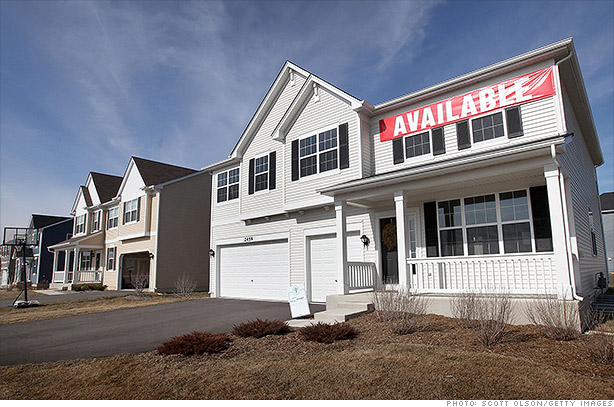Houston has long been a bellwether for how the multifamily housing market responds to stress. Its sprawling geography, diverse tenant base, and reliance on energy-driven employment have made it both resilient and volatile over the decades. Today, the most acute pain is being felt in the Class-C apartment sector, where tenants are largely working-class, incomes are stretched, and properties have little in the way of capital improvements to cushion financial shocks. For years, lenders and investors engaged in what the industry has called “extend and pretend,” kicking the can down the road with loan extensions and maturity forbearance, all in hopes that time would heal what mismanagement and mispricing created. That illusion is collapsing. The numbers no longer pencil, the equity cushions have evaporated, and Houston’s Class-C multifamily is staring down a wave of distress that many insiders now admit is unavoidable.
The basic math is brutal. Class-C assets are often older buildings with higher operating costs, deferred maintenance, and tenants unable to absorb steep rent hikes. When interest rates were near zero, investors piled in, borrowing cheaply to justify inflated acquisition prices under the promise of value-add strategies. They promised to modernize, renovate, and increase rents to match Class-B comparables. Yet the renovations often stalled, tenant bases resisted turnover, and operating expenses ballooned as insurance costs, property taxes, and labor rates climbed. Lenders, eager to avoid crystallizing losses, extended loan terms while requiring little real correction. Today, with interest rates dramatically higher and investors underwater, there is no more runway left. The extend-and-pretend era is ending, and it will leave wreckage across Houston’s workforce housing landscape.
David Moore, CEO and founder of Knightvest Capital, summarized the moment succinctly: “Class-C in Houston is very, very challenged. I don’t think people know how far the pricing has to fall in order for some of these properties to transact, which is somewhat scary.” His warning is not hyperbole. Properties purchased at inflated valuations with aggressive debt assumptions cannot sell unless prices fall drastically, often by 30, 40, or even 50 percent. Yet if valuations collapse that far, most owners will be completely wiped out, and lenders will have to recognize billions in losses. That tension explains why so many distressed deals remain frozen, neither transacting nor stabilizing, while tenants continue to occupy deteriorating buildings that lack the necessary equity injections to fund basic upkeep.
The human consequences of this stalemate are stark. Class-C tenants are typically low- to moderate-income families, seniors, or recent immigrants. They are the first to feel the impact when ownership groups cut corners on maintenance, defer repairs, or ignore code violations. Elevators stall, HVAC systems remain broken, and mold creeps into walls while ownership companies argue with lenders over workout plans. Unlike higher-class multifamily tenants, these households have little recourse, because alternative housing is scarce and often more expensive. For them, the financial chess game between lenders and equity sponsors translates directly into unsafe living conditions, predatory rent increases, and an environment where property preservation is viewed as optional.
On the labor side, Field Service Technicians and Inspectors are often caught in the middle of this collapse, though their role is rarely acknowledged. Inspectors are dispatched to document occupancy, verify habitability, and photograph deteriorating infrastructure. They are often the first to record leaking roofs, broken stairwells, or vandalized units. Yet their reports are only as effective as the lenders and owners who choose to act on them. Field Service Technicians, meanwhile, are called in sporadically to perform band-aid repairs, mow overgrown common areas, or board up vacant units. They work without assurances of timely payment, because owners in financial distress frequently delay invoices or contest charges. The broader crisis in Class-C multifamily thus compounds the exploitation of labor in mortgage field services, where workers become silent witnesses to both financial and human decay.
The extend-and-pretend cycle has also distorted the larger Houston real estate market. By refusing to foreclose, lenders have artificially suppressed distressed sales, preventing new investors with fresh capital from entering the market and rehabilitating properties. The irony is that by protecting their own balance sheets in the short term, banks and servicers are prolonging tenant suffering and accelerating physical deterioration. When the dam finally breaks, the flood of distressed assets will not only drag down valuations but also overwhelm local capacity to manage, inspect, and repair the properties. Contractors will be underbid, inspectors will be rushed, and technicians will be asked to perform miracles on properties that require complete capital reinvestment.
Another hidden factor is the role of insurance and property taxes, which in Houston have climbed relentlessly over the past five years. Insurance premiums on aging multifamily properties have doubled or tripled, especially after a series of Gulf storms and flooding events. Property tax assessments, driven by inflated purchase prices during the boom, remain elevated even as actual values fall. These fixed costs crush Class-C owners who cannot raise rents without mass tenant displacement. Lenders know these numbers make long-term recovery improbable, yet they continue to avoid foreclosures in fear of booking losses. The cost spiral guarantees that even if interest rates decline in the future, many Class-C assets will remain fundamentally unviable.
From an ethical perspective, the crisis underscores the systemic failure of the current financing and servicing model. Tenants are treated as collateral, not as human beings entitled to safe housing. Inspectors are treated as data collectors, their reports ignored until they serve as evidence in foreclosure filings. Field Service Technicians are treated as disposable labor, paid last if at all, despite being the ones preserving what value remains in these properties. The rhetoric of affordable housing collapses into hollow justification when ownership groups refuse to inject equity or walk away responsibly. Instead, lenders and investors engage in delay tactics while residents and workers endure the consequences.
The looming wave of distressed Class-C sales will send prices plunging, as Moore predicted, but that correction is both inevitable and necessary. Properties cannot remain in financial limbo indefinitely without compounding the damage. New buyers, with lower acquisition bases, may finally be able to justify the capital investments required to stabilize and repair buildings. Yet the transition will not be smooth. Houston will see a surge in foreclosure auctions, REO takeovers, and distressed note sales, each requiring an army of inspectors and technicians to document, secure, and maintain the inventory. Unless labor is paid fairly and timely, the risk is that properties will languish further, deepening Houston’s blight.
The Houston Class-C multifamily crisis is not a story of abstract financial modeling but one of human cost and labor exploitation. Extend and pretend has run its course, and the reckoning is now visible. Tenants remain trapped in units that fall apart around them, while technicians and inspectors navigate an industry that refuses to acknowledge their value. Lenders, in their quest to protect paper profits, are sowing deeper losses and human misery. If there is any lesson, it is that denial only postpones the inevitable, and in the meantime, those least able to endure the fallout—working-class tenants and frontline laborers—are the ones who bear it most.







